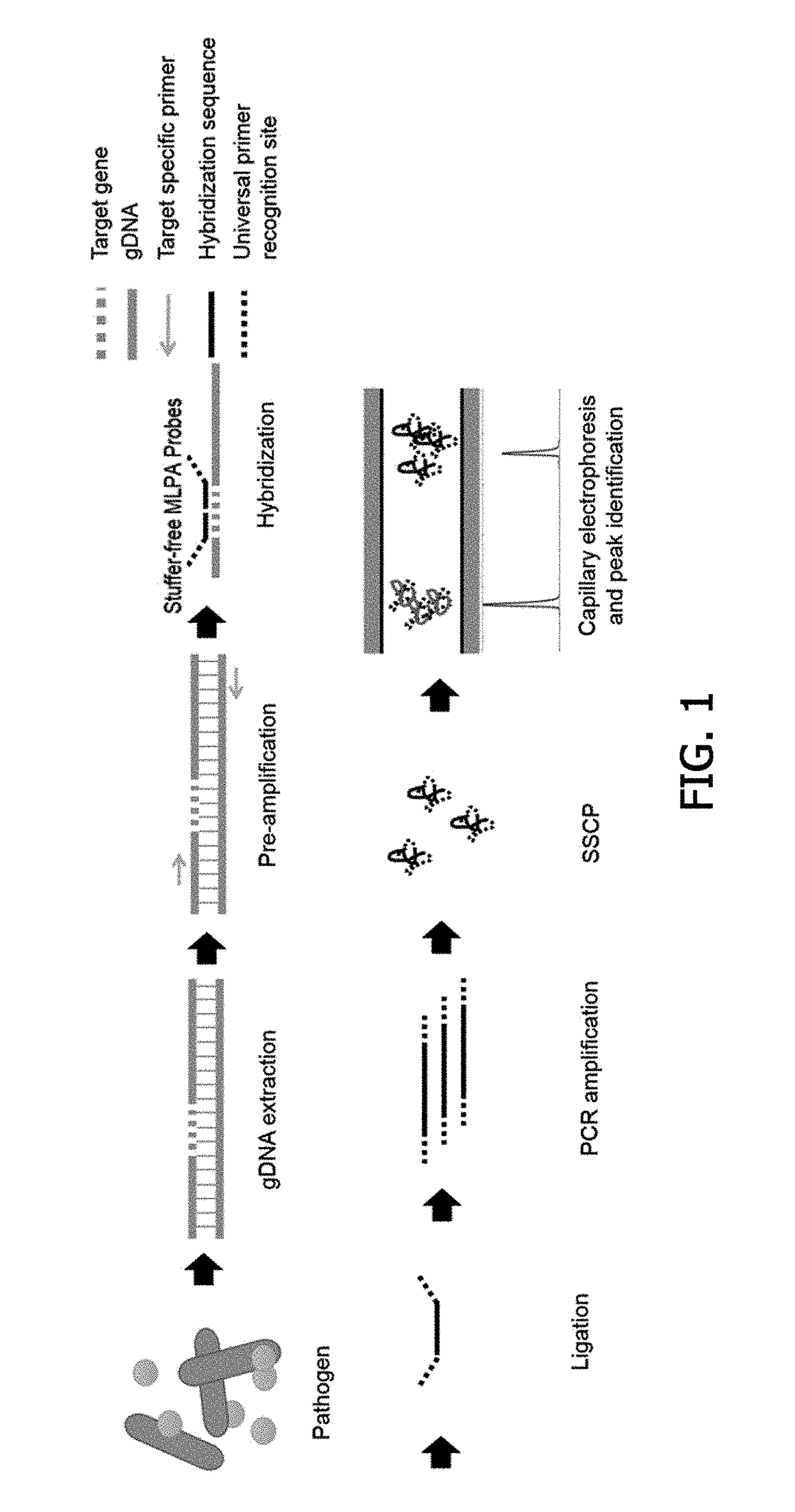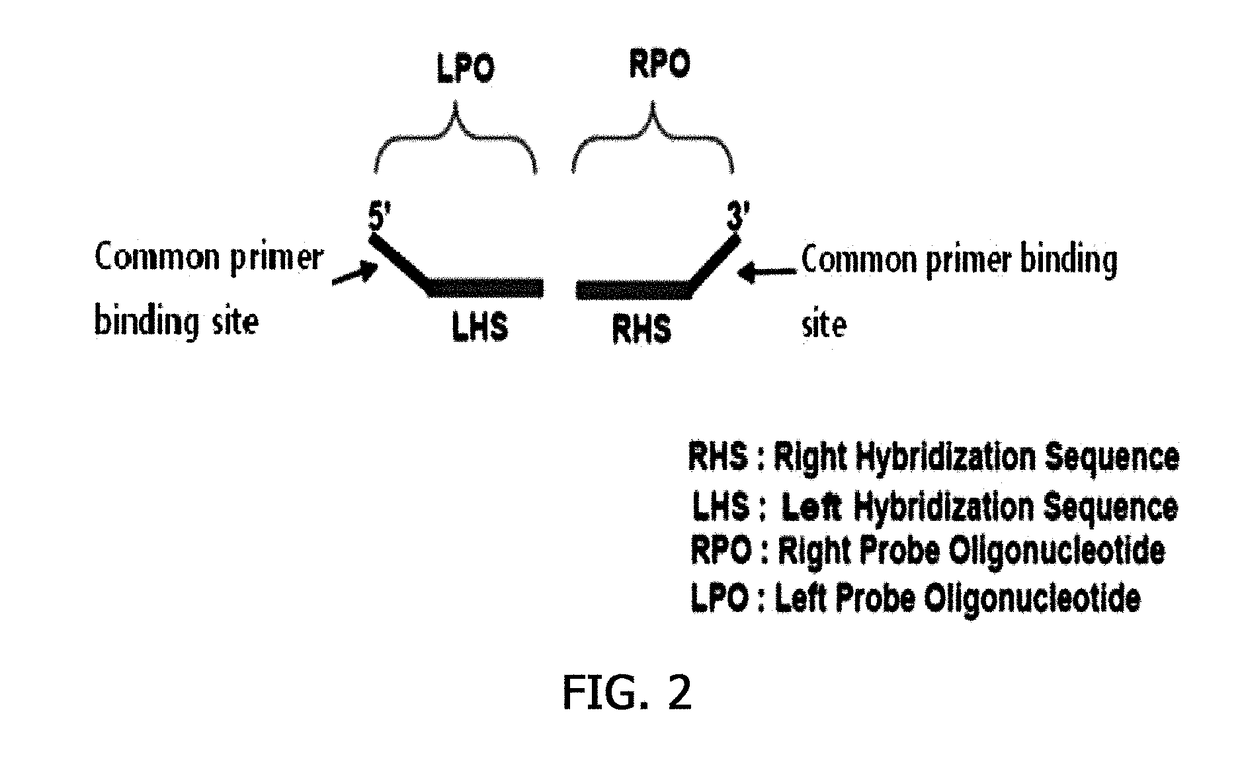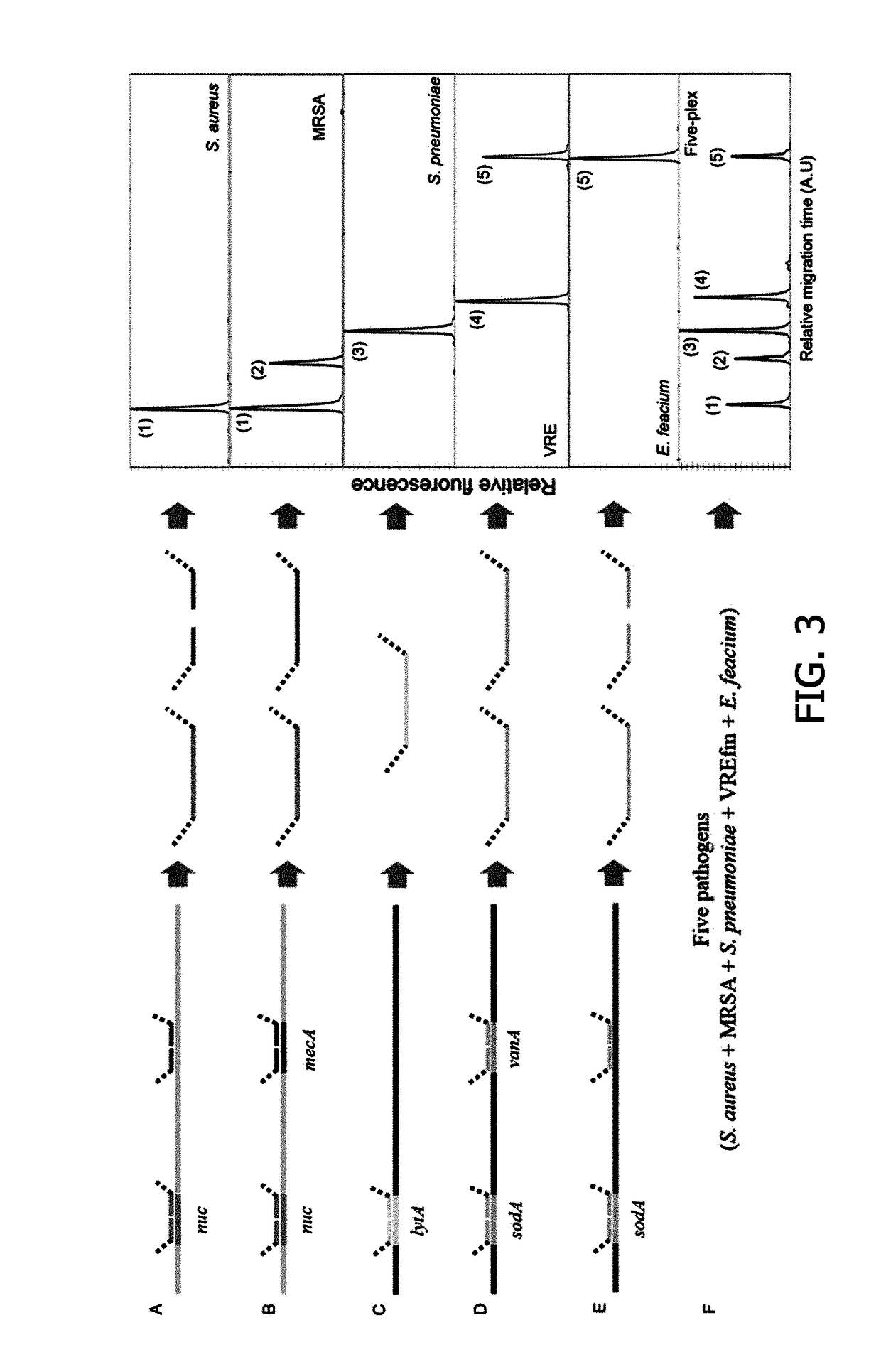Probe for detecting drug resistant gram-positive pathogens, probe set and method for detecting drug resistent gram-positive pathogens using them
- Summary
- Abstract
- Description
- Claims
- Application Information
AI Technical Summary
Benefits of technology
Problems solved by technology
Method used
Image
Examples
example
Example 1. Determination of Sequence of Drug-Resistant Gram-Positive Pathogen Strain to be Detected
[0078]Through a document search for a total of 5 strains widely known as drug-resistant gram-positive pathogen strains, such as Staphylococcus aureus, methicillin-resistant staphylococcus aureus (MRSA), Enterococcus faecium, vancomycin-resistant Enterococcus faecium (VREfm) and Streptococcus pneumoniae, species-specific genes or sequences used to detect each strain gene were selected.
[0079]After securing the genes and the base sequences used to detect each strain gene, the genes and sequences were compared to a DNA sequence database of each strain using the Basic Local Alignment Search Tool (BLAST) developed by the National Center for Biotechnology Information (NCBI), and then specific base sequences were determined.
[0080]The sequence region commonly included in each strain was determined as a region to which a probe specifically hybridizes. The results are shown in the following Table...
example 2
Probe for Detecting Strain
[0081]Based on the specific sequences determined in Example 1, a probe for detecting drug-resistant gram-positive pathogens was designed. The specificity of the selected genes or sequences was identified using BLAST, and then a left hybridization sequence (LHS) and a right hybridization sequence (RHS) were designed so that a ligation site was included in the identified genes or sequences.
[0082]In this case, each of the LHS and the RHS was designed so as to have a sequence length ranging from 21 nt to 50 nt, a Tm ranging from 70 to 80° C. and a GC content ranging from 35 to 65%. Specificities of the LHS and RHS thus designed were identified using FASTA or BLAST.
[0083]The homology of all the sequences of the LHS and RHS thus identified was compared so as to exhibit an alignment score of 50 or less, and common primer binding sequences were added to the LHS and RHS that were identified to exhibit an alignment score of 50 or less to form a left hybridization oli...
example 3
Experiment Using Probe for Detecting Drug-Resistant Gram-Positive Pathogens
[0084]3-1. Preparation of DNA Sample of Strain
[0085]Staphylococcus aureus, methicillin-resistant staphylococcus aureus (MRSA), Enterococcus faecium, vancomycin-resistant Enterococcus faecium (VREfm) and Streptococcus pneumoniae which were identified in the American Type Culture Collection (ATCC), Korean Collection of Type Culture (KCTC), Statens Serum Institut (SSI) and National Culture Collection for Pathogens (NCCP) were selected as reference strains in the method of detecting drug-resistant gram-positive pathogens.
[0086]60 gram-positive pathogens isolated from a clinic and collected in the Korean Centers for Disease Control and Prevention (KCDC) and Seoul St. Mary's Hospital were used to identify the specificity of the method of detecting drug-resistant gram-positive pathogens.
[0087]4 strains except S. pneumoniae were cultured in nutrient broth, S. pneumoniae was cultured in trypticase soy agar with 5% she...
PUM
| Property | Measurement | Unit |
|---|---|---|
| Time | aaaaa | aaaaa |
| Electrical resistance | aaaaa | aaaaa |
| Sensitivity | aaaaa | aaaaa |
Abstract
Description
Claims
Application Information
 Login to View More
Login to View More - R&D
- Intellectual Property
- Life Sciences
- Materials
- Tech Scout
- Unparalleled Data Quality
- Higher Quality Content
- 60% Fewer Hallucinations
Browse by: Latest US Patents, China's latest patents, Technical Efficacy Thesaurus, Application Domain, Technology Topic, Popular Technical Reports.
© 2025 PatSnap. All rights reserved.Legal|Privacy policy|Modern Slavery Act Transparency Statement|Sitemap|About US| Contact US: help@patsnap.com



